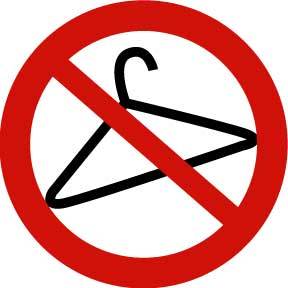By KATE MANNING
New York Times, January 21, 2013
WHY would a woman put a leech inside her body, in the most private of female places? Why would she put cayenne pepper there?
Why might a woman swallow lye? Gunpowder? Why would a woman hit herself
about the abdomen with a meat pulverizer? A brickbat? Throw herself down
the stairs?
Why would she syringe herself, internally, with turpentine? Gin? Drink laundry bluing?
Why might she probe herself with a piece of whalebone? A turkey feather? A knitting needle?
Why would she consume medicine made of pulverized Spanish fly? How about
powdered ergot, a poisonous fungus? Or strychnine, a poison?
Why would she take a bath in scalding water? Or spend the night in the snow?
Because she wanted to end a pregnancy. Historically, women have chosen
all those methods to induce abortion. The first known descriptions
appeared around 1500 B.C. in the Ebers Papyrus, an ancient Egyptian
medical text that mentioned an abortion engineered by a plant-fiber
tampon coated with honey and crushed dates.
For most of history, abortion has been a dangerous procedure a woman
attempted to perform on herself. In private. Without painkillers.
What is most striking about this history of probes and poisons is that
throughout all recorded time, there have been women so desperate to end a
pregnancy that they were willing to endure excruciating pain and
considerable risk, including infection, sterility, permanent injury,
puncture and hemorrhage, to say nothing of shame and ostracism. Where
abortion was illegal, they risked prosecution and imprisonment. And
death, of course.
The newspapers of the mid-1800s were full of advertisements for potions,
pills and powders that claimed to cause miscarriage. “French Periodical
Pills: Warranted to Have the Desired Effect in All Cases” was one such
knowing ad that appeared in The Boston Daily Times in 1845. Those ads
spoke euphemistically of “curing female complaint,” or “renovating” or
“unblocking” the womb. They treated a problem that women called
“suppression of the courses,” the idea being that monthly “turns” were
the norm and that any cessation of normal periods meant they were
“suppressed,” or that the womb was “obstructed.”
Many of the cures for these “ailments” were nothing but sugar and dust.
But some of them were nonetheless quite effective. Those were the
dangerous ones, containing as they commonly did, turpentine, opium,
pennyroyal, aloes, snakeroot, myrrh or oil of rue. One of the most
common ingredients was ergot, or claviceps purpurea, a fungus found on
the stalks of grain. Women as early as the 16th century had observed
that cows that consumed ergot miscarried their calves. The fungus,
however, had disastrous side effects, called ergotism, also known as St.
Anthony’s fire. Symptoms included a burning sensation in the limbs
because of blood constriction, which led to gangrene. The poison could
also cause seizures, itching, psychosis, vomiting, contractions,
diarrhea and death.
Oil of tansy was another common abortifacient. Here is John Irving’s
unforgettable description, from his scrupulously researched novel “The
Cider House Rules,” of a doctor trying to save a woman after too many
tansy-oil miscarriages: “Her abdomen was full of blood...but when he
tried to sew up [the] uterus, his stitches simply pulled through the
tissue, which he noticed was the texture of a soft cheese...his finger
passed as easily through the intestine as through gelatin.” Tansy oil
rots internal organs.
Notwithstanding such ghastly scenarios, abortion did not always — or
even usually — result in death. Many women survived it, which is why for
most of history it was one of the main forms of birth control. If they
did choose to enlist help, they most often called upon another woman,
usually a skilled midwife. But by the 1850s, male doctors began to take
over all aspects of women’s reproductive care, sidelining midwives and
leading the movement to outlaw the practice of abortion. Did they save
some women’s lives by unmasking the dangers of “medicines” to cause
miscarriage? Undoubtedly. But by withholding midwives’ knowledge of how
to provide a relatively safe abortion in the early stage of pregnancy,
they drove other women to undergo the procedure at the hands of the
unskilled, until the United States Supreme Court made abortion legal on
Jan. 22, 1973.
Women’s historical willingness to endure horrible dangers, to submit to
extreme and prolonged pain, to risk grave injury and death rather than
remain pregnant, tells us something important about female desperation
and determination, and the price women were — and still are — willing to
pay to control their own bodies. What it tells us is that women will
always find ways to end an unwanted pregnancy, no matter what the law
says, no matter the risks to themselves.
If the Supreme Court were ever to overturn Roe v. Wade, or if
anti-abortion forces continue to successfully chisel away at a woman’s
access to safe abortion, many women will still choose abortion — by
their own hands. Leeches, lye and Spanish fly are still among the many
tools available to the self-abortionist. So are knitting needles, with
predictable, disastrous consequences. There is no law that will end the
practice of abortion, only laws that can protect a woman’s right to
choose it, or not, and to keep it the safe and private procedure still
available to us in 2013, 40 years after the Supreme Court made it legal.


No comments:
Post a Comment